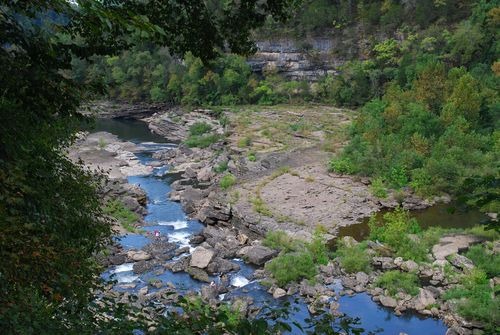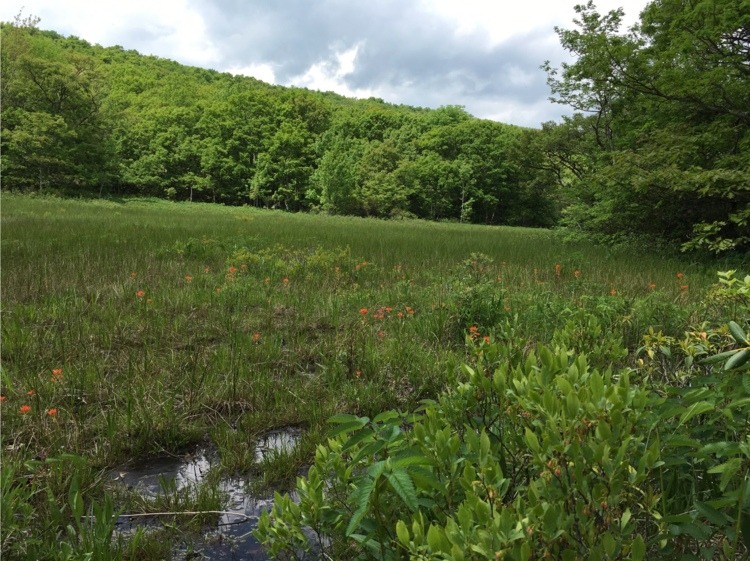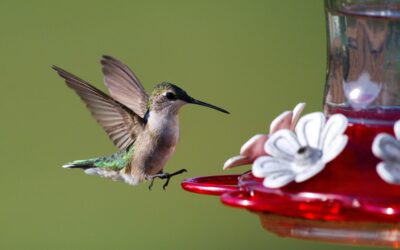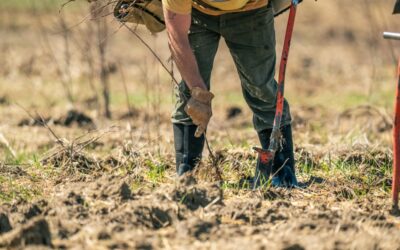Tennessee is known as the most biologically diverse inland state in the country. Part of what makes it so diverse is the many types of habitats, ecosystems, and species found throughout the state. Grasslands were once widespread in Tennessee, but more than 90% of those grasslands are now gone.
What is a Grassland?
A grassland is any habitat in which the dominant vegetation types are grasses, forbs, sedges, and other herbaceous plants. But not all grasslands are the same! In fact, the Southeast contains more types of grasslands than the Great Plains and Midwest combined. Grasslands are a critical habitat type for wildlife—one-third of the rare bird species in the Southeast require grassland habitats at some point in their life cycle.
Grasslands play a crucial role in improving water and habitat quality. Native grasses, with their deep root systems, stabilize soil to prevent erosion and enhance the soil’s ability to store and drain water, especially during floods. These grasses also filter out sediment and pollutants from runoff, helping to maintain clean waterways and support wildlife habitats.
Grassland Types
Prairie
The traditional image of a grassland—vast expanses filled with grasses and wildflowers—is known as a prairie. These landscapes have deep, rich soils and are relatively flat or contain rolling hills. Some prairies will have occasional shrubs or small trees.
Where to find it: May Prairie State Natural Area

Savanna
Savannas are also vast expanses of native grasses and contain sparse tree coverage (10-30%). They are associated with slightly hilly landscapes and have deep, well-drained soils. Historically, savannas were the most widespread type of grassland in the Southeast.
Where to find it: Catoosa Wildlife Management Area, Bridgestone-Firestone Centennial Wilderness, Hickory Flats Wildlife Management Area

Barren
On a smaller scale, barrens are patch habitats, typically only covering a few acres on sloping, eroded sites. The dominant vegetation is perennial grasses and herbaceous plants. They occur on shallow, rocky, drought-prone soils.
Where to find it: Carroll Cabin Barrens State Natural Area, Campbell Bend Barrens State Natural Area, Haw Ridge Park

Glade
Glades are similar to barrens in size and vegetation structure, however glades typically contain annual grasses rather than perennial. The soil is very shallow and rocky, with the bedrock often exposed. Due to poor drainage on the bedrock, glades often retain water from winter to spring and are dry from summer to fall.

Where to find it: Yanahli Wildlife Management Area, Sunnybell Cedar Glade State Natural Area, Couchville Cedar Glades & Barrens State Natural Area
Riverscour Grassland
A riverscour grassland gets its name from the periodic scouring (fast-moving) flooding that occurs. Riverscours occur on sandy soils alongside streams in the Appalachian Mountains. Like glades, riverscour grasslands are wet from winter to spring and dry from summer to fall.

Where to find it: Rock Island State Park, Big South Fork National Recreation Area
Meadow
Meadows are found near the floodplains of small stream valleys. The hydrology of a meadow is influenced by the associated stream and groundwater. Because of the deep, alluvial soils, vegetation is typically mid- to tall-stature grasses and shrubs.

Where to find it: Cades Cove, Great Smoky Mountains National Park; Panther Creek Meadow, Land Between the Lakes National Recreation Area
Fen
One of few wet grassland types is fens. They are typically very small (less than 0.25 acres) and are fed by groundwater from nearby streams. The dominant vegetation is short sedges, grasses, and rushes. Soil composition varies, but it is often waterlogged.
Where to find it: Dry Branch State Natural Area, Langford Branch State Natural Area, Autney Hollow State Natural Area

Sources:
- Ashworth, A. (2011). Native Warm-Season Grass Roles in Water and Soil Conservation: A Literature Synthesis. Department of Forestry, Wildlife and Fisheries, University of Tennessee. Link
- Burger, G., Keyser, P. D., & Vander Yacht, A. L. (2013). Ecology and Management of Oak Woodlands and Savannas. UT Extension, University of Tennessee Institute of Agriculture. Link
- Estes, D., et al. (2016). A Guide to Grasslands of the Mid-South. Published by the Natural Resources Conservation Service, Tennessee Valley Authority, Austin Peay State University, and the Botanical Research Institute of Texas. Link
- Maring, M. (2023, Dec. 11). Cedar Glades: All About Middle Tennessee’s Exclusive Experience. TennGreen Land Conservancy. Link
- Southeastern Grasslands Institute. (n.d.-a) Barrens. Link
- Southeastern Grasslands Institute. (n.d.-b) Glades. Link
- Southeastern Grasslands Institute. (n.d.-c). What are Southeastern Grasslands? Link



